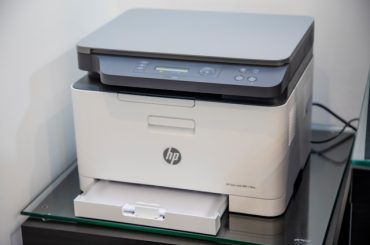Before we dive deep into the SWOT analysis, let’s get the business overview of AMC. AMC Entertainment Holdings, Inc., commonly known as AMC Theatres, is one of the largest movie theater chains in the world. Founded in 1920, AMC has a rich history in the cinema industry and is headquartered in Leawood, Kansas, United States.
Business Overview:
- Theater Operations: AMC operates numerous theaters across the United States and has a significant presence internationally. The company provides a traditional cinema experience, screening various films, including major blockbusters, independent titles, and foreign films.
- Innovative Viewing Experiences: AMC is known for enhancing the movie-going experience through various formats and innovations, including IMAX and Dolby Cinema. These premium formats offer advanced sound and picture quality, attracting a diverse audience.
- AMC Stubs Loyalty Program: AMC offers a loyalty program called AMC Stubs, which includes several tiers with varying benefits, such as free upgrades on concessions, reward points, and waived online ticketing fees. This program aims to enhance customer loyalty and repeat business.
- Food and Beverage Services: AMC has expanded its traditional concessions offerings to include a wider range of options, alcoholic beverages in select locations, and dine-in theater experiences.
- Subscription Services: AMC offers a subscription service called AMC Stubs A-List, which allows subscribers to watch a certain number of movies per month for a fixed fee, providing a steady revenue stream and enhancing customer loyalty.
- Financial Performance: Total revenues were $3,911.4 million compared to $2,527.9 million for 2021. Adjusted net loss was $727.9 million compared to an adjusted net loss of $1,191.9 million for 2021.
Here is the SWOT analysis for AMC
A SWOT analysis is a strategic planning tool used to evaluate the Strengths, Weaknesses, Opportunities, and Threats of a business, project, or individual. It involves identifying the internal and external factors that can affect a venture’s success or failure and analyzing them to develop a strategic plan. In this article, we do a SWOT Analysis of AMC.
SWOT Analysis: Meaning, Importance, and Examples
Strengths
- Large Theater Network: AMC is one of the largest movie theater chains in the world, with a significant number of theaters across the United States and a presence in Europe. This extensive network allows them to reach a broad audience.
- Innovative Viewing Formats: AMC offers a variety of premium viewing experiences, such as IMAX, Dolby Cinema, and RealD 3D, which enhance the movie-going experience and attract customers seeking high-quality entertainment.
- AMC Stubs Loyalty Program: The AMC Stubs loyalty program helps build a strong customer base, encouraging repeat visits and enhancing customer loyalty through rewards and perks.
- Food and Beverage Options: AMC has diversified its concessions offerings, including dine-in theater experiences and alcoholic beverages in select locations, providing additional revenue streams and enhancing the overall customer experience.
- Brand Recognition: AMC is a well-recognized entertainment industry brand known for providing a quality cinema experience.
- Strategic Partnerships and Agreements: AMC’s partnerships with film studios and distributors, as well as promotional deals and exclusive screenings, give it a competitive advantage in attracting movie-goers.
- Adaptability and Crisis Management: AMC’s response to industry challenges, including adapting to safety protocols during the COVID-19 pandemic and exploring alternative business models, demonstrates its resilience and adaptability.
- Use of Technology: AMC’s investment in digital ticketing, mobile apps, and online platforms enhances customer convenience and streamlines ticket buying.
- Alternative Content Offerings: AMC has experimented with offering alternative content, such as live broadcasts of opera, sports events, and concerts, which can attract different audience segments.
- Real Estate Assets: Owning significant real estate assets, including prime locations for many theaters, gives AMC leverage and stability in the real estate market.
Weaknesses
- High Operational Costs: Running an extensive network of theaters is expensive, especially considering the costs of maintaining and upgrading cinema technology and facilities.
- Debt Burden: AMC has historically had a high level of debt, which can limit financial flexibility and increase vulnerability to economic downturns and shifts in the market.
- Dependence on Box Office Hits: AMC’s revenue relies heavily on significant film releases’ success. In years with fewer blockbuster hits, revenue can significantly decline.
- Impact of Streaming Services: The rise of streaming services like Netflix, Amazon Prime, and Disney+ presents a significant challenge as they change how consumers view and access movies, potentially reducing theater attendance.
- Limited Diversification: While AMC has tried to diversify, its core business remains focused on movie exhibitions, making it susceptible to industry-specific risks.
- Vulnerability to Economic Fluctuations: The cinema industry is often considered discretionary spending, making it sensitive to economic downturns when consumers might cut back on entertainment expenses.
- Challenges with Real Estate Management: Managing a large portfolio of real estate assets can be challenging, especially in maintaining profitability for each location and dealing with closures or underperforming theaters.
- Customer Experience Consistency: Ensuring a consistently high-quality and enjoyable movie-going experience across all locations can be challenging, impacting customer satisfaction and loyalty.
Opportunities
- Expansion of Streaming Partnerships: Partnering with streaming platforms for exclusive releases or special screenings can create a new revenue stream and draw audiences to theaters.
- Diversifying Content Offerings: Beyond traditional films, offering a wider range of content such as live sports, concerts, e-sports, and cultural events can attract a broader audience to AMC theatres.
- Enhanced Customer Experience: Investing in enhancing the overall customer experience, including comfortable seating, better food and beverage options, and superior customer service, can increase customer loyalty and repeat visits.
- Technological Innovations: Implementing advanced technologies such as virtual reality (VR) experiences, augmented reality (AR) in lobbies, or app-based services can create a more immersive and convenient customer experience.
- Leveraging Mobile Platforms: Developing a more robust mobile app for ticket sales, loyalty programs, and customer engagement can improve convenience and customer relations.
- Private Theater Rentals: Capitalizing on trends like private theater rentals for small groups or corporate events can be a lucrative opportunity, especially in times of social distancing.
- International Expansion: Exploring expansion into emerging markets with growing demand for cinematic experiences can open new revenue channels.
- Marketing and Brand Partnerships: Collaborating with brands for in-theater marketing or co-branded experiences can provide additional revenue streams and marketing opportunities.
- Sustainability Initiatives: Implementing and promoting sustainability initiatives can appeal to environmentally conscious consumers and potentially reduce operational costs.
- Adaptation to New Distribution Models: Adapting to changes in movie distribution models, including shorter exclusivity windows, can help AMC stay relevant in the evolving cinema industry landscape.
Threats
- Rising Popularity of Streaming Services: The increasing popularity and convenience of streaming platforms like Netflix, Amazon Prime, Disney+, and others pose a significant threat to traditional movie theaters, as they offer consumers an alternative way to view films.
- Changing Consumer Preferences: There is a shift in how younger audiences consume entertainment, with a growing preference for digital content over traditional movie-going experiences.
- Economic Downturns: Economic recessions can lead to reduced discretionary spending, impacting the frequency of movie theater visits.
- Shortening of Theatrical Windows: The trend towards shorter theatrical release windows before movies are available on streaming platforms or home video can reduce the exclusivity period that drives cinema visits.
- Pandemic-Related Challenges: Health crises like the COVID-19 pandemic have led to theater closures, reduced capacity, and increased consumer hesitation about indoor gatherings, severely impacting theater attendance.
- Competition from Home Entertainment Systems: Advancements in home entertainment technology, such as 4K televisions and surround sound systems, make the at-home movie-watching experience more appealing and a competitive alternative to theaters.
- Increased Film Production and Distribution Costs: Rising costs for film production and distribution can affect the profitability of the entire movie industry, including theater chains like AMC.
- Regulatory and Legal Risks: Regulatory changes, especially those related to health, safety, and content distribution, can impose additional operational burdens and costs on AMC.
- Vulnerability to Cybersecurity Threats: As AMC expands its digital and online services, it becomes more susceptible to cybersecurity risks and data breaches.







